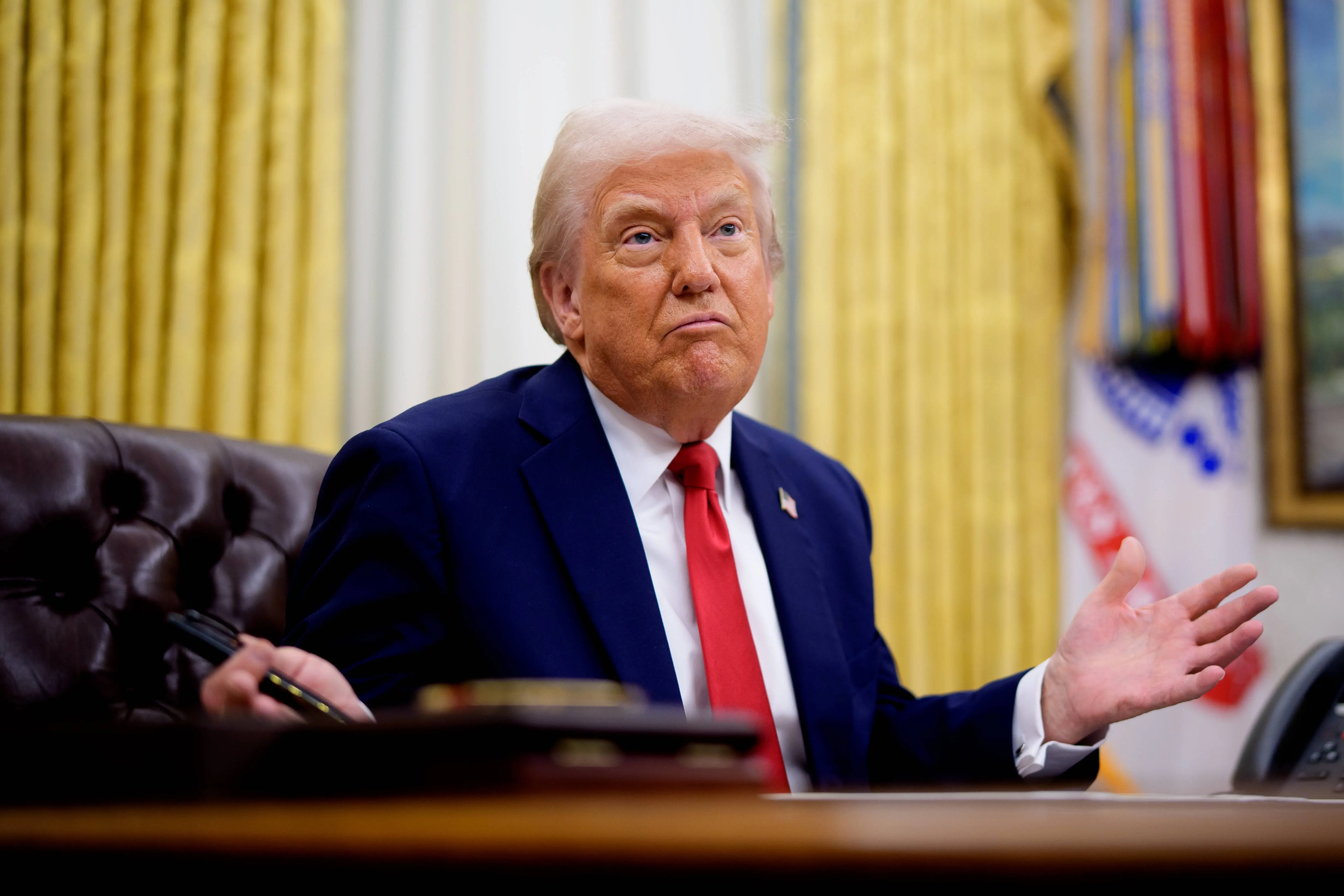Why did the US stop testing nuclear weapons? Everything to know as Trump tells Pentagon to resume testing for the first time since 1992
-
 WASHINGTON, DC - MARCH 31: U.S. President Donald Trump gestures while speaking during an executive order signing event in the Oval Office of the White House on March 31, 2025 in Washington, DC. Trump has signed an executive order against ticket scalping and reforming the live entertainment ticket industry. (Photo by Andrew Harnik/Getty Images)
WASHINGTON, DC - MARCH 31: U.S. President Donald Trump gestures while speaking during an executive order signing event in the Oval Office of the White House on March 31, 2025 in Washington, DC. Trump has signed an executive order against ticket scalping and reforming the live entertainment ticket industry. (Photo by Andrew Harnik/Getty Images)On Wednesday, October 29, Donald Trump announced in a Truth Social post that the Department of War in the US was resuming its nuclear weapons testing programs.
In the post, the president mentioned that while the US had "more nuclear weapons than any other country," other countries - like Russia and China - would reach on the same level in the coming five years.
In his Wednesday post to Truth Social, Trump said that “because of other countries’ testing programs, I have instructed the Department of War to start testing our Nuclear Weapons on an equal basis. That process will begin immediately.” pic.twitter.com/HQD6DK3XXc
— Gary Buckley™ (@myrddenbuckley) October 30, 2025Trump's recent announcement marks the beginning of nuclear testing in America after more than three decades.
The US carried out its last nuclear testing in 1992, four years after which the Comprehensive Nuclear Test-Ban Treaty (CTBT) was adopted.
The growing concern of the impact of nuclear tests on the environment and human health was another reason behind the US pausing them.
The international treaty came after 50 years of usage of the first atomic bombs - a pair dropped by the US on the Japanese cities of Hiroshima and Nagasaki in August 1945, during the World War II.
In these five decades, over 2,000 nuclear testings had been conducted globally. Per Reuters, the US was responsible for more than have of these tests - 1,032 to be specific - with Russia following closely behind, with 715 tests.
Other countries who tested nuclear weapons during the period included France - with 210 tests - and China and Britain, with 45 tests each.
Since the introduction of the CTBT, only 10 nuclear tests have taken place - with two of them done by India and Pakistan each, and the remaining six by North Korea.
However, Trump has now instructed Pentagon to resume its testing, which means that the 33-year-long pause could be ending any day now.
Trump's decision to resume nuclear testing comes after Russia's nuclear-capable super torpedo
NEW - Putin says Russia successfully tests Poseidon nuclear-capable "doomsday torpedo," capable of triggering radioactive tsunamis rendering coastal cities uninhabitable — Reuters pic.twitter.com/3Mc9rBXHtu
— Disclose.tv (@disclosetv) October 29, 2025Trump's post about Pentagon resuming nuclear testing after decades comes as Vladimir Putin announces the news of Russia successfully testing a nuclear-propelled torpedo-drone.
The Russian president shared on Wednesday (October 29) that Kremlin's test of the torpedo-drone - named Poseidon - was successful. He also told Russian soldies:
"For the first time, we managed not only to launch it with a launch engine from a carrier submarine, but also to launch the nuclear power unit on which this device passed a certain amount of time... This is a huge success."
According to The Guardian, Russian officials describe the Poseidon as a new category of retaliatory weapon.
Complete with a nuclear warhead, Poseidon can trigger a radioactive tsunami that will leave all coastal cities uninhabitable.
Analysts believe that the Poseidon has a range of over 6,200 miles (10,000 kms) and can travel at the speed of lightf 185 km per hour.
Russian media also reports it to be 20 meters long, and weighing 100 tonnes, with a diamete of 1.8 meters.
TOPICS: Donald Trump, Nuclear
- “This is a family tragedy”: Marjorie Taylor Greene urges empathy after Trump refers to Rob Reiner as ‘Tortured’ and ‘Struggling’ in condolence message
- “His pardon means absolutely nothing”: Harry Sisson explains why Donald Trump's Tina Peters pardon is redundant
- Elon Musk says Ketanji Brown Jackson is "openly advocating for the destruction of democracy" after she claims Trump has no right to fire experts
- What left Gloria Gaynor stunned ahead of the Kennedy Center Honors? Disco icon celebrates historic moment as the only female honoree